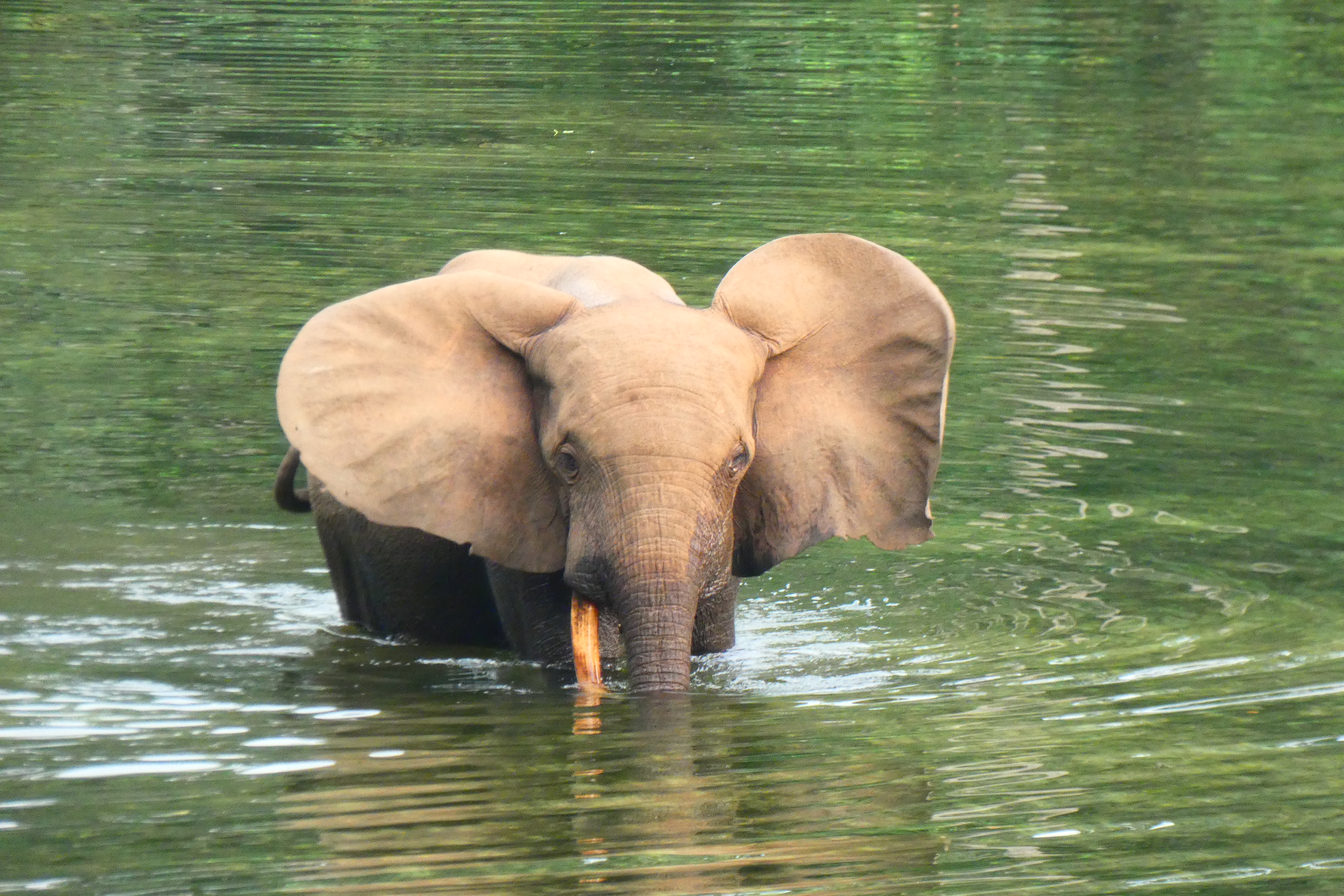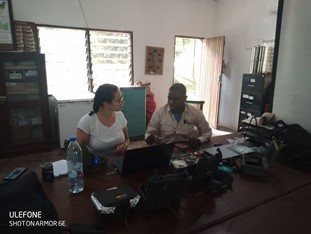Listening to elusive giants: technology transfer to gain deeper insights into African forest elephants
News




African forest elephants, lowland bongos and forest buffalos at a forest clearing. Photo: Gregoire Dubois
African forest elephants (Loxodonta cyclotis) are unique and crucial inhabitants of the Congo rainforest in Central Africa, with smaller populations in West Africa. Distinguished from their counterparts in Asia and the African savannas by appearance, diet and habitats, these elephants play a vital role in their ecosystems by maintaining biodiversity, facilitating seed dispersal of large carbon-storing trees and creating clearings that promote forest regeneration. As a keystone species, their survival is crucial for the health of tropical forests and their myriad inhabitants. Without them, carbon stocks and biodiversity of the Congo rainforest are at stake, fundamentally altering its composition. However, African forest elephants face significant threats from poaching for ivory and habitat loss due to deforestation and human encroachment, leading to dramatic population declines of over 86% over a period of 31 years and their classification as critically endangered on the IUCN Red List. Conservation efforts to protect this species are critical for maintaining the ecological balance and sustainability of Africa's forest ecosystems.
A major challenge in conserving African forest elephants is the lack of information, as they are the least studied among the three elephant species. Limited knowledge about temporal and spatial distributions, as well as poaching patterns, hinders the effective allocation of conservation efforts in the vast forests of Central Africa. The Elephant Listening Project (ELP), part of the K. Lisa Yang Center for Conservation Bioacoustics at the Cornell Lab of Ornithology, plays a vital role in addressing this challenge. In 1984, ELP co-founder Katy Payne discovered that elephants communicate using low-frequency sounds called ‘rumbles,’ which travel farther through closed habitats than higher-frequency sounds. Forest elephants use these rumbles, which humans cannot hear, to communicate over long distances in dense forests. By recording and analyzing these calls, ELP aims to understand the movements, communication, behavior and family structures of African forest elephants. Forest clearings, called baïs, where families of forest elephants gather to dig for minerals are an ideal setting to study their social interactions. At the same time, threats like logging and poaching can be detected through the recording of sounds from chainsaws and gunshots. Information obtained through bioacoustic monitoring is crucial for improving management strategies and can even be used to evaluate the effectiveness of patrolling efforts.

Elephant rumble sound visualization. Source: ELP
To leverage this innovative approach, TROPIBIO field technician Patrícia Guedes attended a hands-on workshop on passive acoustic monitoring techniques with the ELP team in Nouabalé-Ndoki National Park, Republic of Congo. The training covered spatial sampling design, installation and maintenance of acoustic recording units, data management and processing, and the use of specialized software and detection algorithms.
 |  |
Training with ELP in Nouabalé-Ndoki National Park. Photos: Patrícia Guedes
This knowledge and technology are now being transferred to study the elusive forest elephants in Guinea-Bissau. Only a very small population of forest elephants, estimated at fewer than ten individuals, persists in the country near the border with Guinea. Earlier this year, local park rangers from IBAP - Instituto da Biodiversidade e Áreas Protegidas have already been trained in tree climbing to deploy monitoring devices like acoustic detectors and camera traps in the canopy. The use of passive acoustic monitoring of the forest elephants in Guinea-Bissau will provide new insights into this severely threatened population and inform an emergency conservation action plan developed by TROPIBIO collaborator Luís Palma.
 |  |
Tree climbing training in Guinea-Bissau. Photos: Patrícia Guedes
Additionally, the Gulf of Guinea Research Program (GGRP) will expand research efforts on African forest elephants to Cameroon, Equatorial Guinea, Gabon, and Cabinda (Angola). Using DNA analysis, bioacoustics, and camera traps, GGRP aims to produce population estimates, map hotspots, and identify priority areas for conservation. Studying the effects of habitat destruction and hunting on these populations is also a focus of the program. Further research aimed at understanding and protecting African forest elephants is essential to ensure these crucial animals continue to thrive and support the ecological balance of their rainforest habitats.
African forest elephant, Nouabalé-Ndoki National Park. Photo: Patrícia Guedes
